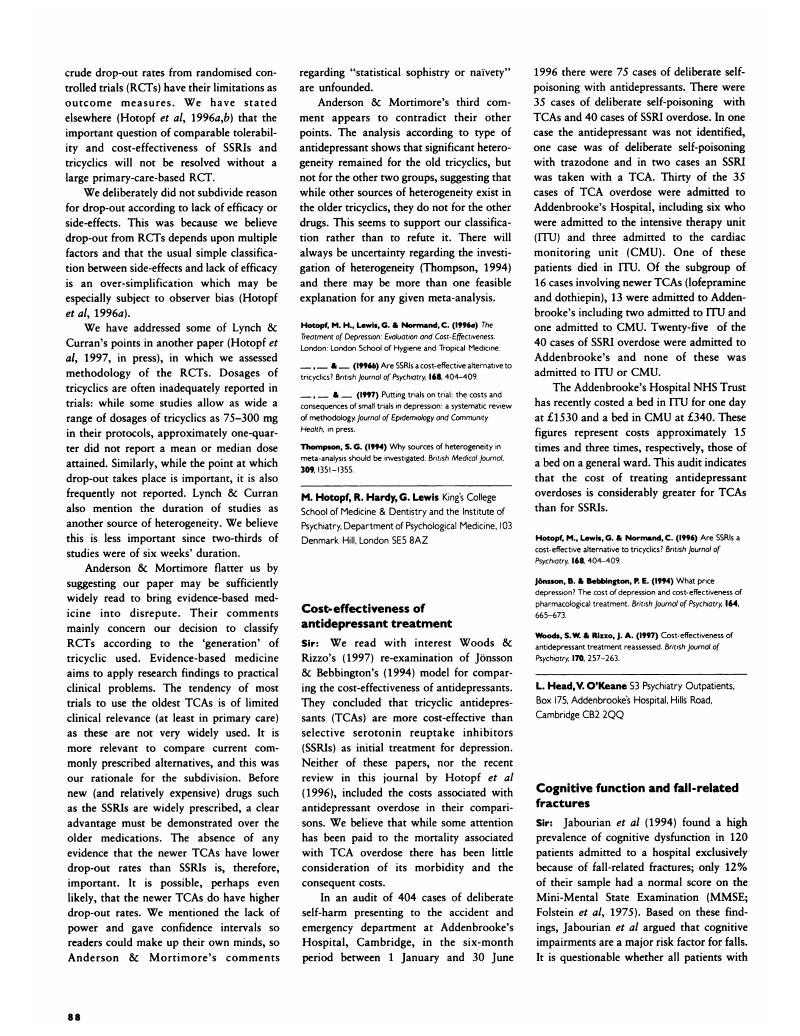No CrossRef data available.
Article contents
Cognitive function and fall-related fractures
Published online by Cambridge University Press: 03 January 2018
Abstract
An abstract is not available for this content so a preview has been provided. As you have access to this content, a full PDF is available via the ‘Save PDF’ action button.

- Type
- Columns
- Information
- Copyright
- Copyright © 1997 The Royal College of Psychiatrists
References
Breakhus, A., Laake, K. & Engedal, K. (1992) The Mini-Mental State Examination: identifying the most efficient variables for detecting impairment in the elderly. Journal of the American Geriatric Society, 40, 1139–1145.Google Scholar
Folstein, M. M. F., Folstein, S. E. & McHugh, B. R. (1975) ‘Mini-Mental State’. A practical method for grading the cognitive state of patients for the clinician. Journal of Psychiatric Research, 12, 189–198.CrossRefGoogle Scholar
Jabourian, A. P., de Jaeger, C., Findji, G., et al (1994) Cognitive functions and fall-related fractures (letter). British Journal of Psychiatry, 165, 122.Google Scholar
King, M. & Tinetti, M. E. (1995) Falls in community-dwelling older persons. Journal of the American Geriatrics Society, 43, 1146–1154.Google Scholar



eLetters
No eLetters have been published for this article.